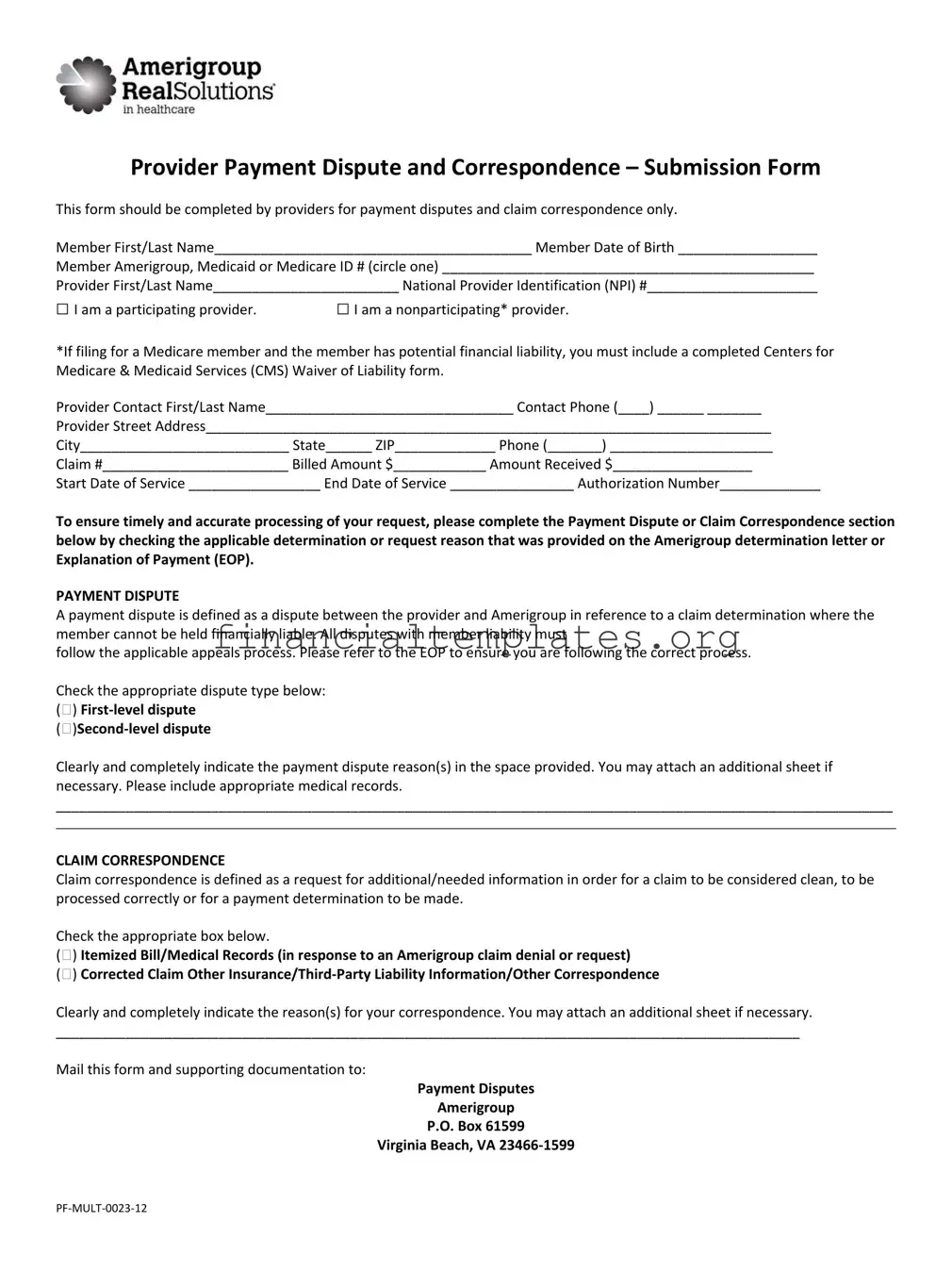Provider Payment Dispute and Correspondence – Submission Form
This form should be completed by providers for payment disputes and claim correspondence only.
Member First/Last Name_________________________________________ Member Date of Birth __________________
Member Amerigroup, Medicaid or Medicare ID # (circle one) ________________________________________________
Provider First/Last Name________________________ National Provider Identification (NPI) #______________________
*If filing for a Medicare member and the member has potential financial liability, you must include a completed Centers for Medicare & Medicaid Services (CMS) Waiver of Liability form.
Provider Contact First/Last Name________________________________ Contact Phone (____) ______ _______
Provider Street Address_________________________________________________________________________
City___________________________ State______ ZIP_____________ Phone (_______) _____________________
Claim #________________________ Billed Amount $____________ Amount Received $__________________
Start Date of Service _________________ End Date of Service ________________ Authorization Number_____________
To ensure timely and accurate processing of your request, please complete the Payment Dispute or Claim Correspondence section below by checking the applicable determination or request reason that was provided on the Amerigroup determination letter or Explanation of Payment (EOP).
PAYMENT DISPUTE
A payment dispute is defined as a dispute between the provider and Amerigroup in reference to a claim determination where the member cannot be held financially liable. All disputes with member liability must
follow the applicable appeals process. Please refer to the EOP to ensure you are following the correct process.
Check the appropriate dispute type below: () First-level dispute
()Second-level dispute
Clearly and completely indicate the payment dispute reason(s) in the space provided. You may attach an additional sheet if necessary. Please include appropriate medical records.
____________________________________________________________________________________________________________
____________________________________________________________________________________________________________
CLAIM CORRESPONDENCE
Claim correspondence is defined as a request for additional/needed information in order for a claim to be considered clean, to be processed correctly or for a payment determination to be made.
Check the appropriate box below.
() Itemized Bill/Medical Records (in response to an Amerigroup claim denial or request)
() Corrected Claim Other Insurance/Third-Party Liability Information/Other Correspondence
Clearly and completely indicate the reason(s) for your correspondence. You may attach an additional sheet if necessary.
________________________________________________________________________________________________
Mail this form and supporting documentation to:
Payment Disputes
Amerigroup
P.O. Box 61599
Virginia Beach, VA 23466-1599
PF-MULT-0023-12

